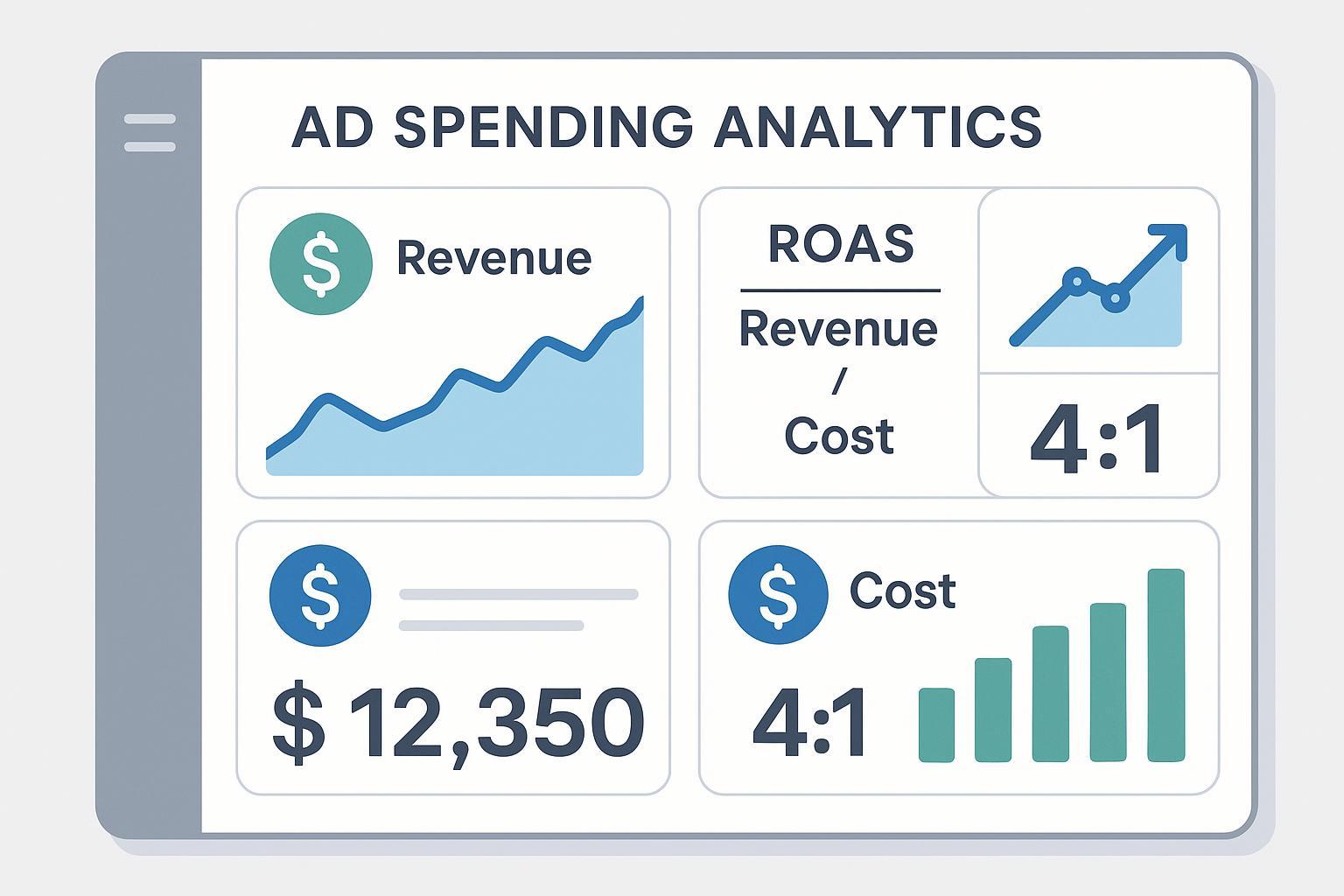What is Return on Ad Spend (ROAS)? Definition & Marketing Applications
Discover the meaning of Return on Ad Spend (ROAS), how it’s calculated, and why it matters for digital marketing ROI. Key tips, examples, and comparisons included.


Definition: A Single Sentence
Return on Ad Spend (ROAS) measures the revenue generated for every dollar spent on advertising, serving as a core metric to evaluate the effectiveness of digital marketing campaigns.
In-Depth Explanation
ROAS is a straightforward yet powerful metric used to assess the direct financial impact of advertising activities. At its core, ROAS quantifies how efficiently your ad spending translates to actual revenue. Marketers and advertisers depend on ROAS to make data-driven decisions about budget allocation, campaign optimization, and channel performance.
Formula:
ROAS = Revenue from Ads / Cost of Ads
- Expressed as a ratio (e.g., 4:1, meaning $4 earned for every $1 spent)
- Or as a percentage (e.g., 400%)
Reliable attribution is essential: correct assignment of revenue to specific campaigns is critical for accurate ROAS measurement. Attribution models (first-click, last-click, multi-touch) can significantly affect this calculation and should be selected to match campaign goals.
Key Components of ROAS
- Revenue Attributed to Ads: Only include revenue that can be directly linked to the measured advertisements.
- Advertising Cost: This encompasses all spending on the specific ad campaign(s)—media spend, creative costs, and technology fees if included in campaign budgeting.
Real-World Applications & Scenarios
- Ecommerce Example: An apparel retailer spends $2,000 on Facebook Ads and earns $8,000 from those campaigns. ROAS = $8,000 / $2,000 = 4:1 (or 400%).
- Multi-Channel Marketing: ROAS enables marketers to dissect performance across Google Ads, paid social, display, and influencer channels, identifying which investments yield the highest returns and guiding reallocation of budget.
- Best Practices: Experienced marketers optimize ROAS by refining audience targeting, creative assets, and landing page experiences, as well as by testing attribution settings and leveraging retargeting.
For an authoritative industry perspective, see BigCommerce's ROAS Guide and AppsFlyer's Ad Metrics Overview.
Common Pitfalls & Troubleshooting
- ROAS ≠ Profit: ROAS measures revenue return, not net profit—other business costs are not included.
- Overlooking Attribution: Using incorrect or inconsistent attribution models can mislead analysis.
- Ignoring Customer Lifetime Value: Focusing solely on immediate ROAS risks missing long-term customer value, especially in subscription or repeat-purchase models.
How to Interpret ROAS: What’s Considered Good?
There’s no universal "good ROAS," as benchmarks vary by industry, profit margins, and campaign type. For eCommerce, a typical ROAS ranges from 2:1 to 4:1, according to leading industry studies. Higher-margin businesses may target higher ROAS, while startups or subscription models may accept lower ROAS in exchange for growth.
ROAS vs. Related Metrics
| Metric | What it Measures | Formula / Focus |
|---|---|---|
| ROAS | Revenue per $ spent on ads | Revenue from Ads / Ad Spend |
| ROI | Net profit after all costs (including ad spend & overhead) | (Net Profit / Total Cost) |
| CPA | Cost to acquire one new customer or conversion | Ad Spend / Number of Conversions |
| CTR | Ad engagement – how often people click after seeing the ad | Clicks / Impressions |
| CLV/LTV | Average total revenue from a customer over their lifecycle | Revenue per Customer |
- For a deep dive, reference Shopify’s ROAS Analysis and Mailchimp’s Glossary.
Action Steps to Improve ROAS
- Refine Targeting: Use analytics to identify best customer segments.
- Upgrade Creative: Test different ad formats and visuals for higher engagement.
- Optimize Landing Pages: Ensure fast, relevant, conversion-focused landing experiences.
- Leverage Retargeting: Re-engage visitors who didn’t convert on the first visit.
- Analyze Attribution: Use the right models to track which touchpoints drive results.
- Continuous Testing: A/B test campaigns, messaging, and spend allocation.
Conclusion
ROAS provides a focused view of ad efficiency, empowering marketers to maximize the value of their digital spend. For best results, combine ROAS insights with other metrics (like ROI, CPA, and LTV), and always interpret results in context to make informed, profit-oriented decisions.





